WILD GARDENS
WILD GARDENS - those areas of natural vegetation that are not managed or discuplined, at least not directly, but which have a special pictureque quality. Wildlife, from bees to birds, parhaps hedgehogs or even deer, will find such environments enticing and sustaining. Of course, completely natural environments are even better, but recognising such environments in garden or managed environmental contexts is valuable.
Also see GARDENS OF WEST DUNBARTONSHIRE index.asp?pageid=719389
"Wildlflower meadows" are a topic often promoted for our domestic gardens and parks. The Council already has a policy of leaving grassed verges and other areas unmown through the spring and summer to encourage wild flowers. Not everyone seems to appreciate or understand this, but to those who do, it creates areas that are of great delight - of variety if species and of colours. And of course many birds and insects enjoy them too.
Many native and naturalised plants are discussed above. This section now explores the extraordinary richness that results from the natural juxtaposition of different plants. Of course, what may have started out as simply a "naturalised" species can turn nasty as an invasive species. Those can be of great concern when they begin to overwhelm and eventually oust native species.
Think of feral fhododendra or knotweed. There are qutie a few of concern.
But many plants grow quite happily together and share common soil, moisture and polinators. The results can be qutie delightful. Experience the same areas over time and you will notice a slow transition of plants and their flowers - the first ones receding and new ones taking over prominence - the colour scheme and juxtaposition of textures forever altering well into summer.
As autumn arrives, the colours become subdued and many plants even disappear. Well the show is not quite over. Autumnal colours can also be very striking.
Of course little of the "natural environment" of Scotland is really untouched or altered in some way by mankind. But what we are looking at here are cominations of flowers and other plants that combine in rich tapestries of colour and texture through some degree of natural chance and without further interference by us.
The scenario is constantly changing with the seasons as some flower come into bloom and others recede - not just altered flower combinations, but constantly changing hues too.
What you see one day, may be very different a week or so later.
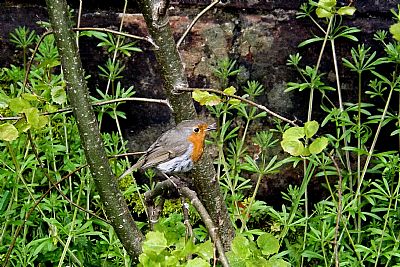
A robin explores brambles with sticky willy.
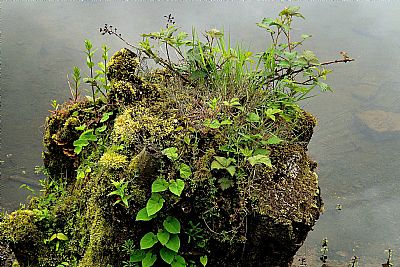
The Japanese have perfected the art of miniaturistion of plants complete with rocky mountains. Here on the upper Leven a tree stump covered in moss, bambles and other plants appears to create such a mystical scene.
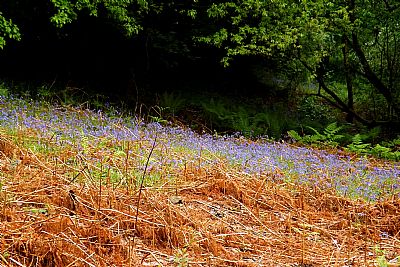
The purple blue haze of bluebells rises beyond the golden remains of last years bracken just as the new fronds start to emerge in May.
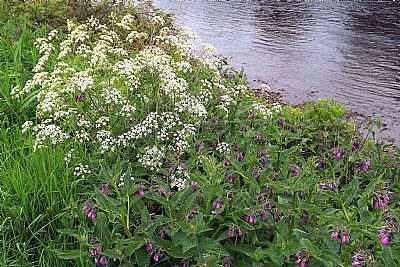
Purple comfrey and white cicely meet on the banks fo the Leven.
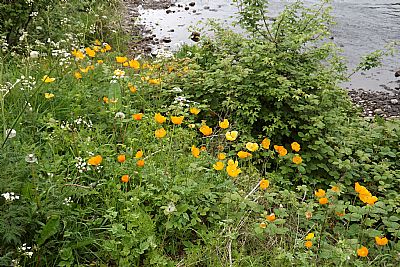
while close by Iceland poppies add a warm orrange.
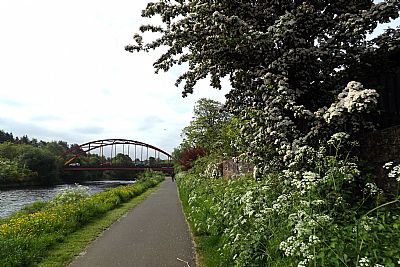
A view in May looking towards Bonhill Bridge. Hawthorn and cicely contrast with buttercups. Note how the Council have conscientiously mowed just a narrow strip along the towpath edge and left a broad band of floral delight.
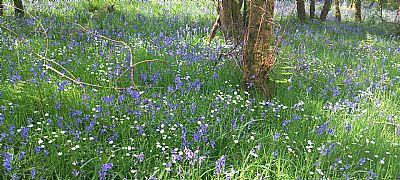
Bluebells dance in the breeze amongst white stitchwort across the green grasses below the trees in the RSPB Lomond reserve.
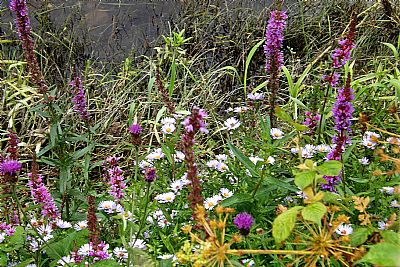
By August the banks of the upper Leven have changed yet again. Here we see loose strife alongside aster whie the dry stems of hogweed flowers lean over to dispurse their seeds.
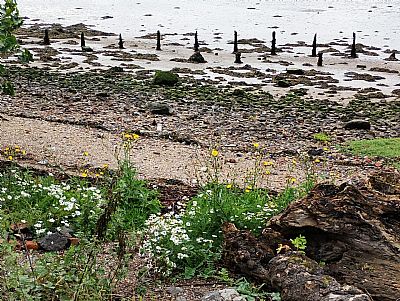
Our subject of wild gardens presupposes that we are looking at nature in its most original form. However we are also discussing aspects of our local area impacted on by mankind. No excuse is needed for this picture of the shore of the Clyde complete with the remnants of wooden posts that once held timber destined for the shipyards.
SCOTLAND'S GARDEN SCHEME : https://scotlandsgardens.org/my-scottish-wild-garden-welcome/

